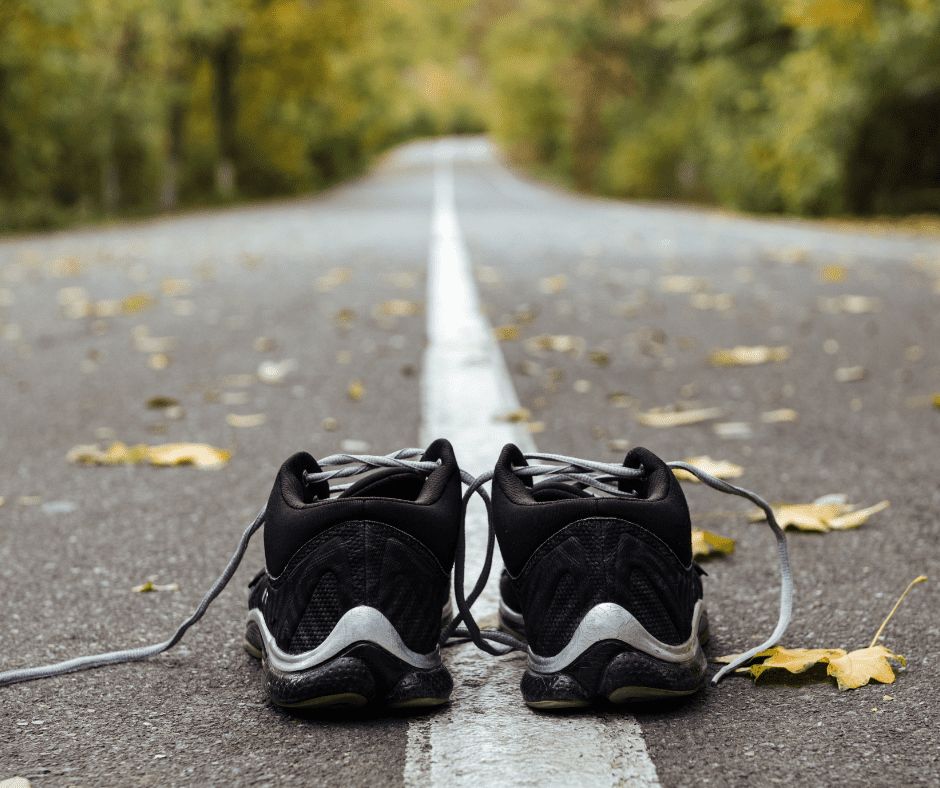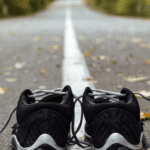You did it, you faced the large colorful wall in your local running store, which holds dozens of shoes, and… you found the pair of your dreams!
Buying new running shoes is not an easy choice and you wish you could try out your new bad boy’s in the 21K you’ve entered in 2 days… but you know the deal… They first need to be broken into… or so you think.
These days we are not required to “break in” new running shoes because of the modern technology that has been used to create the shoes.
However, it’s always advised not to be running a race in a brand-new pair of shoes. We recommend getting a little bit of mileage in those shoes while training beforehand.
Let’s have a more detailed look at why you don’t need to necessarily break your running shoes in…

This Is Why You Don’t Have To Break In New Running Shoes
Gone are the days of bleeding feet while waiting for the hard parts of your running shoes to soften up.
The only reason you would need to wear your shoe over a few kilometers is that there might be slightly different structural differences in new shoes compared to your old ones, so you need to see if they’re going to work for you.
It’s not a case of having to break them in but it’s more a case of getting your feet used to them.
Even if you’ve bought the same model of the shoe as your previous ones… your old shoes have lost the structural properties, and they’re a bit flatter. The new pair will have more support, so they’re going to set up differently around your feet.
So as a result, it might take just a bit of getting used to.
It’s just a case of running them in a little bit so that you can get a feel for if something is wrong or if these new shoes aren’t going to work for you.
The general rule of thumb when replacing running shoes is that you should get between 800 to 1000 kilometers or 500 to 650 miles out of a pair of running shoes. So when you hit that 800km or 500 miles mark, you know you should start shopping. However, the mileage you get out of a pair of running shoes also depends on your weight and how you run.
We’ve put together a running shoe mileage guide to help you understand exactly when you should start running in new shoes. You can find it here.
If your old shoes are….. Well… Too old to run in anymore, but you’ve got a race coming up and are contemplating whether or not you should run in your old ones or run in your never worn new ones, this is what to do…
Old Running Shoes Causing Pain

If you’re running in an old pair of shoes, and they are now in a bad state and actually causing you knee or foot pain then that is a sure sign that you are going to be WAY better off running in your new shoes, even if you have left it a bit late and have a race coming up.
Again, this is not always advisable, but you’re better off than if you are running in pain caused by your old shoes.
That begs the question… when should you change your shoes before a big race?
When You Should Change Your Shoes Before Race Day
A good rule of thumb is that you should aim to get between 80 and 100 kilometers done in your new shoes before race day.
So that before your race, your shoes are then really well worn in and good to go.
For an ultra race like the Comrades Marathon, we recommend that you look at getting a minimum of 100 kilometers in your new shoes before race day.
If you are looking at new shoes, it is a good idea to consider buying the newer model of the same shoes you currently have – if you are happy with them that is.
For example, if you have been running in the New Balance 1080s then it’s worth your while to buy the new New Balance 1080s. Changing brands and models bring the risk of different hill-toe drops and structural properties which could be completely different from what you’re used to.
If you know what has always worked for you in the past then stick to the same models and buy the upgrades for that model.
Your new running shoes are not meant to be hurting you, if they are these may be the reasons why…
Possible Reasons For Pain Caused By New Running Shoes
It’s normal for you to feel the need to adjust to new shoes (hence the wearing-in process) but with the modern technology used to create running shoes these days, there is no excuse as to why your new shoes should cause you pain.
These are the possible reasons why you may be experiencing pain from your new running shoes:
- Wrong size

If you selected the correct size running shoe for you then you should feel relatively comfortable from your first run
- The wrong shape
Some shoe models are completely different shapes from each other, some have narrow toe boxes, some have more volume and some have different heel-toe drops… It’s important to select that shape correctly according to what you’re used to running in.
- Wrong Type
Your gait determines whether you have a neutral pronation if you overpronate or underpronate (also known as supination).
If you overpronate or supinate it puts more stress on certain areas in the feet & legs . This could increase your risk of injury.
Different types of shoes can help support your feet if you find that you are overpronating or supinating and it’s causing you pain.
If you need some help understanding which type of shoe you may need according to your running gait, we put this little guide together.
If after a couple of test runs in your new shoes you start to feel pain, or develop blisters, or even if they just feel completely wrong and uncomfortable… this is not a sign that they need to be “broken in” remember, that’s a thing of the past. Take the shoes back to the store as it may be size, type, or shape problem.




Comments are closed.